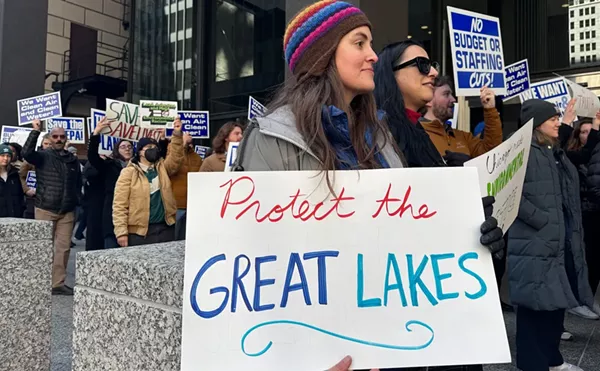The big foundations that have begun targeting neighborhoods all have southwest Detroit in their sights. The area is often touted as the fastest-growing part of the city.
A big reason for that is what’s described as a strong core of effective community activists — people like Vince Murray of the Bagley Housing Authority, a community development corporation funded with a mixture of government and foundation dollars that serves one square mile in southwest Detroit, east of I-75. Murray has a pretty good idea of what it takes to turn a neighborhood around. Over the past decade, Bagley Housing and the Southwest Detroit Business Association have invested about $100 million in the one square mile they serve.
The investment has paid off. When Bagley Housing set up shop in 1992, the average price of a house in the neighborhood was $7,500. Now it’s close to $45,000, Murray says. And the condos his group recently built are selling for $180,000.
Murray didn’t start out in community development. Formerly a psychologist, he moved to Detroit from New Jersey in the early 1990s. Once here, he started attending St. Anne’s, the historic Catholic church in southwest Detroit. He says that when he arrived, that area had had been going downhill for a long time.
With Bill Clinton in the White House and a strong urban agenda as one of his priorities, there was a surplus of housing funds. The problem, Murray says, was that much of that money was going to what he describes as dysfunctional neighborhood groups.
Through St. Anne’s, a focal point for the neighborhood, the Southwest Detroit Business Association and the Citizens District Council came together to form Bagley Housing in 1992.
“We said, if the other groups aren’t going to do anything, we’ll start a new group,” Murray recalls. “We put a plan together, and basically have been implementing it ever since.”
It was a straightforward strategy: stabilize the neighborhood by removing blighted structures and building affordable housing.
Murray likes to downplay his group’s success.
“Bagley Housing was lucky,” he says. “We had the benefit of a central gathering place, an emergent ethnic community, vacant land, lots of money, a new spirit to get things done — we’ve been riding that for about a decade.
“In a lot of communities, they haven’t gotten a plan together, or they don’t have a central place to gather.”
There’s another problem: Now, instead of an urban-friendly Democrat as president, we have George Bush, a leader who critics say has no urban agenda at all.
Murray says he’s not sure that the feat his group accomplished could be replicated because a lot of the programs that provided the initial budget for Bagley Housing have been altered or cut. But, no matter how much money you’re dealing with, he says, good planning is essential.
“To get investment, you’ve got to have a coherent plan other people can see and are willing to believe will work. But it’s easier when you have money.” Send comments to [email protected]






